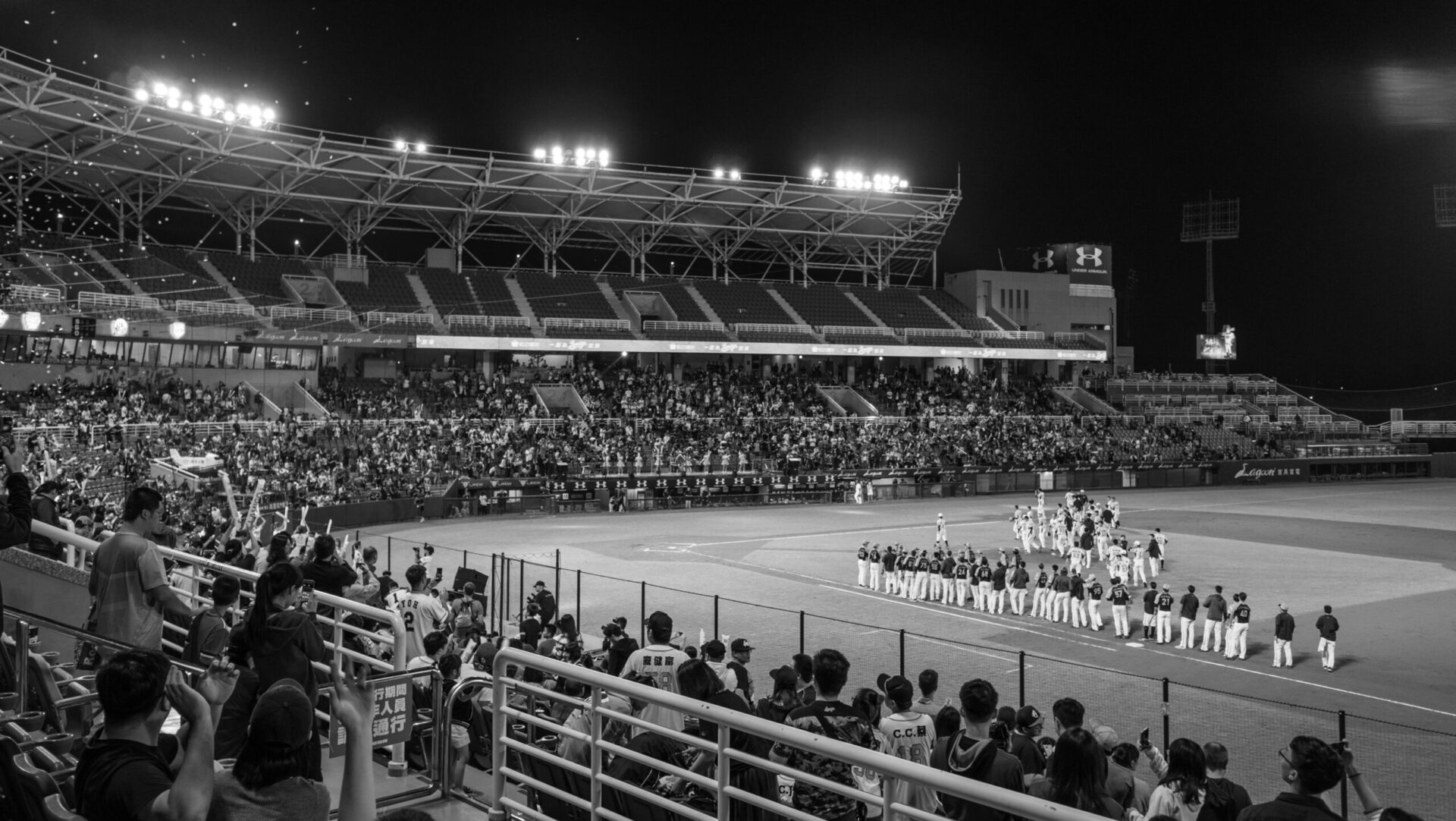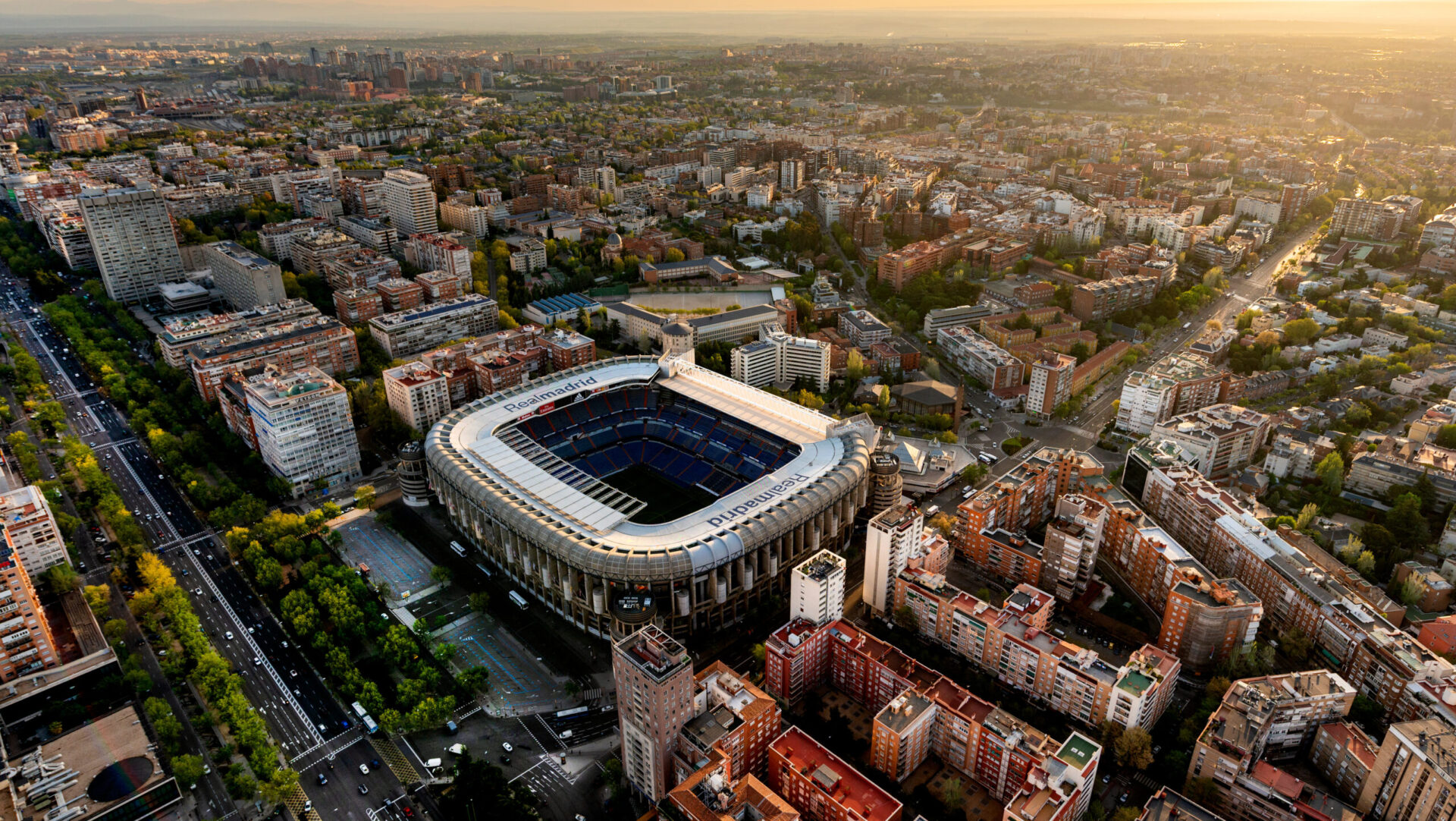October 22, 2025

Source: Photo by Kenzo Tu on Unsplash
Back in September, the DC Council advanced a proposal to demolish the ailing Robert F. Kennedy Stadium, the District’s football headquarters for several decades. Home to the Commanders until 1997 and to D.C. United through 2017, the stadium ceased to host matches when its maintenance costs became unsustainable. The advanced proposal, which will see 190 acres of the east side of DC’s urban core redeveloped into retail, housing, hotels, restaurants, and community green space all anchored by a rebuilt, state-of-the-art Commanders Stadium, has attracted responses ranging from enthusiasm to frustration.
The frustration is understandable: with a price tag of $3.7 billion, much of which would come from public subsidies, the stadium project represents a major investment for the District that opponents of the plan argue comes at the expense of more pressing problems.
But even as we understand the frustration, we think DC has an opportunity to rethink how football stadiums relate to their neighborhood and to their city. Depending on what they do next, the rebuilt Commanders stadium could be a role model for a new type of American urban sports venue.
A Question of Opportunity Cost
Although the specific concerns of DC residents and advocates differ, they share a fundamental objection: that it’s unwise to continue dedicating a huge amount of Federal land to a structure that will only be occupied to max capacity for around 10 days each year.
In other words, their objection questions whether the development is worth its opportunity cost – that is, the development opportunities we’d lose by moving forward with the current RFK redevelopment plan. Critics of the current plan would say the biggest loss is the chance to build housing in a city with famously high housing costs and little room to grow. An obvious question appears: why not continue with the plan to demolish the existing RFK Stadium but rebuild its successor in the suburbs?
Why Not the Suburbs?
There’s a long history of the NFL fleeing to suburbia, with many teams making the exodus in the latter half of the twentieth century, and while the trend has been reversing in the twenty-first century, it isn’t completely dead: in September, the Chicago Bears announced plans to depart Chicago for suburban Arlington Heights. In an opinion piece for Bloomberg, Matthew Yglesias observes how the peculiar needs of the NFL (its stadiums must be physically larger than those of other major American sports despite the fact that they host many fewer matches throughout the year) make them a poor fit for urban contexts, but, “Luckily, America has a place with vast acres of space just looking for a use: It’s called the suburbs.” “What cities need” instead of elephantine stadiums, Yglesias continues, “is housing.”
Yglesias is articulating here the most common critique of the Commanders Stadium proposal: that the space would be better used if filled with housing that could act as an amenity to residents every day of the year—not just 10. His math here is persuasive. And it’s strengthened by the fact that a 2025 study conducted by researchers from the Universities of Utah and Texas, Austin, concluded that the relationship between American stadiums and their environments continues to be largely parasitical, in that “localities continue to subsidize stadium development with few material gains for residents.”
We think these concerns are worth considering as the stadium redevelopment moves forward, but they’re also premised on assumptions that don’t have to be inevitable. We don’t subscribe to the idea that large-venue developments like the Commanders Stadium must sacrifice residential development at the altar of opportunity cost. For one thing, this thinking ignores the reality that the redevelopment plan, far from preventing residential development in DC, might be facilitating it. The current plan sees 6,000 units of housing bundled into the redevelopment of the stadium’s acreage, with space left over for retail and a potential second Metro station. (What this says about the practical reality of getting residential developments greenlit in the U.S. without the hook of a major tourist attraction could, and does, take up an entire other article.) DC’s At-Large Councilmember Christina Henderson put it plainly to StreetSense: “To suggest that if we don’t build a stadium, we would somehow be able to deliver 5,000 units of affordable housing, that’s just not realistic.”
For another thing, this line of thinking ignores the fact that many major European cities weave large stadiums—including stadiums capable of hosting NFL matches—into extremely dense urban fabrics. Take, for example, Wembley Stadium, which hosted a match between the LA Rams and the Jacksonville Jaguars in October 2025 and which is situated in the Brent borough of northeast London. But to consider the footprints that make these stadiums possible requires us first to reckon with the cultural significance we’ve bestowed upon transportation on gamedays.

In the 1970s, stadiums became marooned attractions, disconnected from other amenities. This led to fans setting up their own grills and bringing stocked coolers in stadium parking lots, which turned the lots into compensatory social spaces they had sacrificed in favor of the car.
Rethinking RFK’s Redevelopment by Reimagining the Tailgate
According to Greater Greater Washington, “the average NFL stadium includes about 20,000–25,000 parking spots,” though stadiums equipped to host the Superbowl are required to have at least 35,000 parking spots, which can take up anywhere from 100 to 350 acres. In other words, the entirety of the proposed acreage surrounding Commander Stadium could reasonably be taken up by parking. The current plan is to have at least two parking garages built for dedicated stadium use by the stadium’s opening in fall 2030.
It’s difficult to envision developing the site without a healthy parking supply because of the sacred role parking lots play in tailgating. Although the history of the American tailgating predates the automobile, history writer Christopher Klein notes that the modern tailgate has been inextricably fused to the car. As car ownership proliferated as a status symbol in the U.S. after World War II, American organized sports—birthed by the Ivy League just after the Civil War—chose to gild its already glossy reputation by doubling down on its association with the markers of the American dream: stadiums relocated to the suburbs, where they could be accessed primarily by car, which meant that stadiums needed to provide large supplies of parking.
Throughout the 1970s, Klein notes that stadiums became effectively marooned attractions “ringed by acres of asphalt instead of vibrant neighborhoods with local restaurants and bars.” Their disconnect from other amenities led to fans setting up their own grills and bringing stocked coolers in stadium parking lots, effectively turning these lots into the compensatory social spaces they had sacrificed in favor of the car—a hall-of-fame example of opportunity cost.
Because many people enjoy tailgating—a ritual arguably as important as the game itself—it’s easy to forget that it’s a jerry-rigged solution to the fundamental trap of surface parking. Because surface parking creates sprawl in land use, it then increases reliance on cars, which then creates the need for even more parking, which exacerbates sprawl even further until eventually the only feasible way of traveling between sites in the area is with a car…that will need to be parked somewhere. In urban environments, neighborhoods afflicted by sprawl become so difficult for people traveling by any mode other than car that they become effectively cordoned off to those users. This makes the entire city—not just the car-dependent neighborhood in question—harder to navigate.
From a dollar-and-cents perspective, surface parking doesn’t offer a good return on investment, either. The cost per square foot of a parking space is fabulously expensive, and every square foot that is dedicated to stadium parking becomes a square foot that can’t be allotted to a business that might bring in tax revenue for the District. While visitors would pay to use stadium parking, recall that the infrequency of games means the parking supply would only be realizing its full revenue potential for 10 days of the year.
One major victory of the Commanders Stadium redevelopment, then, will be if its proposed parking supply can work smarter instead of simply being larger. There are a few principles that the redevelopment can follow to minimize the deleterious effects of surface parking and maximize the District’s return on its athletic investment:
- Create parking redundancies wherever possible. Because the Commanders Stadium proposal includes retail and residential uses, there’s no reason why stadium parking can’t function as parking for those facilities. This functional redundancy means that the stadium lot won’t sit empty for the majority of the year. By this same notion, the development can trim the amount of parking dedicated to the stadium by forming agreements with nearby retail and residential lots to help metabolize the influx of sports fans on game days. Trimming the parking supply through parking redundancies is one of the strategies many European stadiums have mastered: Bernabéu, a stadium in Madrid, occupies an oversized city block. A dedicated parking garage sits kitty corner from the stadium in the street grid, but trip guides deemphasize it as the main parking resource for fans by pointing out the many other low-cost garages and shared parking lots proximate to the stadium. Overall, minimizing the amount of horizontal land that’s dedicated to surface parking will create a denser, more walkable fabric, which lowers the need for parking in the first place.

Madrid’s Bernabéu Stadium fits snugly into the city’s urban fabric. Source: Adobe Stock
- Build additional amenities into the stadium itself. If more people have more reason to visit the stadium throughout the year—if the stadium becomes a city attraction as opposed to a sports attraction—the overall development becomes more justifiable. While the future Commanders Stadium could easily follow the playbook of other peer venues and double as a concert venue (imagine if the District had had a venue large enough to host Taylor Swift’s Eras tour!), we also advocate for folding in reasons to enjoy the facility year-round. Consider untapped functionality within the stadium’s architecture and location. The Tottenham-Hotspur Stadium, in North London, offers the Dare Skywalk, a walking path around the rim of the stadium’s ceiling that visitors (while wearing proper safety equipment, of course) can take to get panoramic views of the city. The Commanders Stadium’s perch, at the convergence of the Anacostia and Potomac Rivers, means that a similar walkway (or even a design that emphasizes indoor-outdoor transitions) would offer a dramatic backdrop for visitors or residents who just want to experience the District from a different angle.
- Make other modes feasible to reduce the need for parking to begin with. Another feature that sets European stadiums apart from their counterparts in suburban America is their proximity to transit—Bernabéu, with its lean footprint that abuts the street, is circled by transit stops.
- View redevelopment as an opportunity to improve connectivity for the whole District. Centering modal connectivity in the planning of the redevelopment will go a long way to reduce the need for parking. Organizing park-and-ride services on game days can help usher fans from various surrounding parking lots to the stadium. Making good on the potential for a second Metro station would help people on the east side of the District reach downtown every day of the year in addition to helping fans reach the stadium on game days. The current bridges that connect Anacostia to the stadium aren’t comfortable for pedestrians. Redevelopment offers an opportunity to revisit these facilities and make them more comfortable for all users. Finally, the stadium looks out over rivers: by amplifying residents’ ability to reach the site by water, whether if by water taxi or ferry, the project can create new connectivity between different parts of the city where previously none existed.
A combination of the above strategies could so economize the supply of parking in the redevelopment that it threatens the beloved institution of the tailgate. If a commute to the stadium looks less like a single car ride and more like a two-stage trip, with visitors driving to any one of smaller parking lots along the outer edge of the development and then walking or taking shuttles to the stadium, or even ferrying to the stadium from across the river, then the traditional picture of the static tailgate with individuals decamped immediately outside of the stadium becomes impossible.
What replaces it is a picture of a living, roaming tailgate, in which entire neighborhoods work together on game days to metabolize a shared migration toward the stadium. This vision of tailgating resembles something more like a neighborhood block party. The greater reliance on transit and walking makes it easier for fans to celebrate not just responsibly on game day, but with likeminded sports-goers. Imagine grabbing a bite to eat at a local restaurant before the game before then riding a bus full of fans of your team to the stadium. (One of the authors of this very blog post participated in one of these roaming tailgates while attending an Aussie Rules football game at a stadium in the heart of Melbourne, Australia. It was fun!)
For those who worry this would irrevocably Europeanize an American tradition, consider that the concept of a dispersed, nomadic tailgates already happen commonly in the very places that birthed the contemporary American tailgate: universities. College towns across the country transform into extended tailgates on game days, with people traveling in from out of town, celebrating wherever they’ve managed to park, and then taking a scenic stroll through campus to make kickoff.

If we follow the strategies of urban planning instead of suburban planning, we can make the fabric of this redevelopment denser with retail, housing, and other facilities that form a new stream of tax revenue for the city.
Planning Not Only for a Stadium, but for a Neighborhood Community
Especially given that the RFK Stadium is being demolished and redeveloped in no small part due to tax-based subsidies, we’d advocate for starting from the question of how this amenity can improve the quality of life Districtwide—not simply how it can be the best sports stadium. Given the size and the mixed-use nature of the proposed redevelopment, approaching the project like a neighborhood (instead of merely a large venue) can expand the ways the project gives back to its host city.
If we follow the strategies of urban planning instead of suburban planning, we can make the fabric of this redevelopment denser with retail, housing, and other facilities that form a new stream of tax revenue for the city. (By increasing the amount of tax revenue the District receives from the development, the project can head off the critique that residents are helping to pay for a facility that will enrich only private developers.)
In this arena, the Commanders proposal is already off to a good start. The plan breaks up the 190 acres into five distinct neighborhoods, each with a different land use profile determined by its relation to the stadium. The Stadium District will house the Stadium itself, the neighboring Plaza District will focus on mixed-use retail and housing, while the Kingman Park District will consist of primarily low-density housing. The neighborhoods may have their own identities, but these don’t have to (and shouldn’t) come at the cost of transportation infrastructure that makes all five of them easily permeable to residents and visitors.
The quality of the development’s transportation infrastructure may just be the pivotal feature in determining whether it succeeds as a new addition to the District. Coherent, mass transportation investments can unite the development’s neighborhoods to one another while plugging them into the District at large. These investments can help to move large quantities of people not just on game days but every day. The ability of the site’s transportation infrastructure to remain flexible and accommodating over the course of its decade-plus-long construction (recently announced delays indicate some of the development’s neighborhoods might not be fully realized until 2040 at the earliest) will also make or break the development’s early reputation as a place that is either for everyone or merely for fans.
Most importantly, planning for a neighborhood requires leadership to listen to and learn from that neighborhood’s residents. The same research that found that communities don’t yet benefit from the stadiums they help to subsidize also found that of the 89 sports stadiums built in the U.S. between 2000 and 2022, only five had formalized community benefits agreements between developers and their host communities. By contractually obligating developers to provide facilities that enrich the community in addition to themselves, these agreements can help “[mediate] the harmful effects of traditional economic development [that have] been well-established in urban planning scholarship.” In urban planning, every decision has an opportunity cost; the questions facing the redevelopment of the RFK Stadium concern how much this opportunity will cost, and whether, with some savvy transportation planning, residents can avoid bearing the brunt of it.
